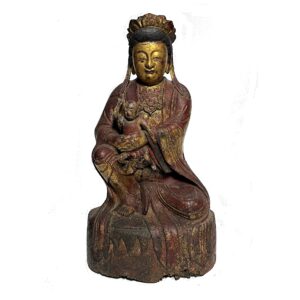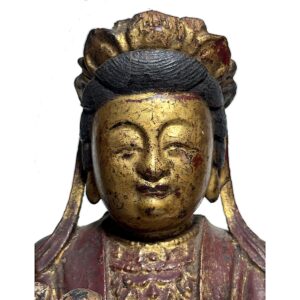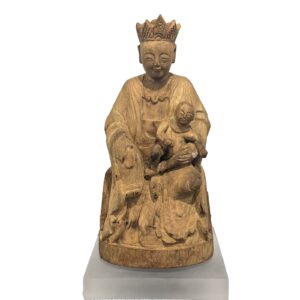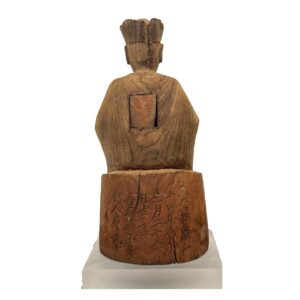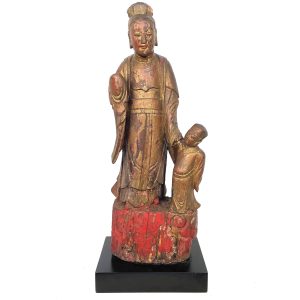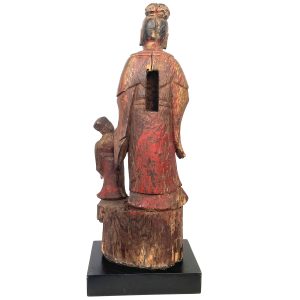-
Sale!


$2,650.00 Original price was: $2,650.00.$1,975.00Current price is: $1,975.00.
H: 14.5” W: 8.25” D: 5” | CALL 213-568-3030 OR EMAIL [email protected] FOR SHIPPING.
Rare and beautiful provincial Songzi Guanyin is modest, compassionate and humble with lotus leaf crown, unadorned robe and pedestal with simple leaves. Her baby resembles the infant Buddha. Was probably on a home altar of wealthy couple desiring a (male) baby.
-
Sale!


$1,350.00 Original price was: $1,350.00.$1,100.00Current price is: $1,100.00.
H: 11” W: 5.75” D: 5.125” | FREE SHIPPING WITHIN CONTINENTAL U.S.
Very rare and fine 16th century home shrine image with compassionate countenance of Songzi Guanyin the “Bestower of Children.” With joyful half-closed eyes, she looks lovingly at the child whose arm is draped over hers.and leans slightly forward.Wearing a 5- lobed crown centered with a camellia flower a Chinese symbol of young sons and daughters. Inscription dates it to 1521-1567
-
Sale!


$2,250.00 Original price was: $2,250.00.$1,700.00Current price is: $1,700.00.
Ht: 26” W: 10.25” D: 7.5″ |CALL 213-568-3030 OR EMAIL [email protected] FOR SHIPPING
Rare provincial image of Guanyin tenderly holding a young child’s hand similar to Songzi “Child-Giving Guanyin”. Consecrated with vibrant gilt and red surface in front and back.
End of content
End of content

